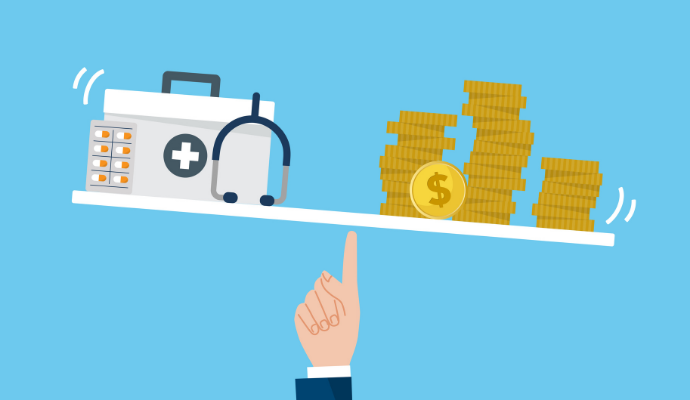Part D Out-of-Pocket Costs Pose a Barrier to Treatment Access
Medicare beneficiaries with a low-income subsidy may pay under $10 in out-of-pocket costs for a cancer drug under Part D coverage, while those without subsidies may pay over $3,000.

Source: Getty Images
- Out-of-pocket costs may dissuade Medicare beneficiaries from initiating treatment with high-price Part D specialty drugs, as beneficiaries without low-income subsidies were less likely to fill a new prescription than beneficiaries with partial or full subsidies, a Health Affairs study found.
Most older adults in the US access prescription drug insurance through Medicare Part D. Under the standard benefit, beneficiaries must pay a portion of a medication’s list price each time they fill the prescription. Costs for high-price treatments can add up fast, as there is no out-of-pocket spending limit for Part D coverage.
As a result, beneficiaries may avoid starting treatment with a new drug, leading to adverse health outcomes.
Low-income subsidies can help mitigate the high out-of-pocket costs of prescription drugs, but not all beneficiaries qualify for subsidies.
To document treatment initiation rates among fee-for-service (FFS) beneficiaries with and without low-income subsidies, researchers gathered EHR data, FFS Medicare claims, and Part D event data between 2012 and 2018 from 11 health systems. They focused on prescriptions for specialty drugs that treat cancers, hepatitis C, immune system disorders, and hypercholesterolemia.
There were around 17,000 new prescriptions issued for high-price Part D specialty medications throughout the study period. Full low-income subsidies were most common among beneficiaries with prescriptions for hepatitis C drugs and least common among those who were prescribed medications for hypercholesterolemia.
For all beneficiaries, the average rate of non-initiation, or not filling a prescribed drug, was 39.4 percent across all drugs. The rate was higher for immune system drugs (54.2 percent) and hypercholesterolemia drugs (66.8 percent), but lower for cancer drugs (28.3 percent) and hepatitis C drugs (20.9 percent).
When differentiating between individuals with and without low-income subsidies, non-initiation was higher among beneficiaries without a subsidy for drugs for all four conditions, the study found. Beneficiaries without subsidies were 37 percent less likely to fill a new prescription across all medications than those with partial or complete subsidies.
The non-initiation rate for cancer drugs was 30 percent for beneficiaries without subsidies compared to less than 15 percent for those with subsidies. For hypercholesterolemia drugs, the non-initiation rate was nearly 70 percent for individuals with subsidies and less than 45 percent for individuals with subsidies.
The non-initiation rate for immune system drugs was nearly 60 percent for those without subsidies compared to around 30 percent for those with subsidies.
For these three drugs, beneficiaries without subsidies were between 35 and 50 percent less likely to fill their prescribed medications.
The non-initiation rates for hepatitis C drugs were similar for both beneficiaries, although it was slightly higher for those without subsidies. The researchers noted that this might be attributed to the limited treatment duration for this drug or greater motivation to obtain treatments due to the associated high cure rate.
The differences in non-initiation rates are likely due to the variation in expected out-of-pocket costs for prescription drugs for the two beneficiary groups.
For example, a single fill for one cancer drug under the Part D standard benefit would cost more than $3,000 out-of-pocket for someone without a low-income subsidy in 2021. The same drug would cost less than $10 for an individual with a full low-income subsidy, the study noted.
Certain federal regulations could help lower out-of-pocket spending for Part D prescriptions and increase access to medications.
The Biden administration’s Build Back Better Act includes proposed modifications to the Part D benefit to reduce the financial burden of high-price specialty Part D drugs.
The law would allow the federal government to negotiate prices for expensive treatments without generic alternatives, limit cost-sharing for insulin, require Medicare Part D plans to cover ACIP-recommended vaccines for free, and repeal the drug rebate rule.
In addition, the study noted that redesigning the Part D benefit to include a $2,000 annual cap on out-of-pocket spending could help improve affordability and reduce non-initiation. However, some beneficiaries may still struggle if they reach the cap with a single high-price fill.
The Alliance of Community Health Plans also recommended that policymakers add an annual out-of-pocket cap, extend price negotiation to the commercial market, and require drug companies to follow a price transparency rule to help mitigate Part D spending.
